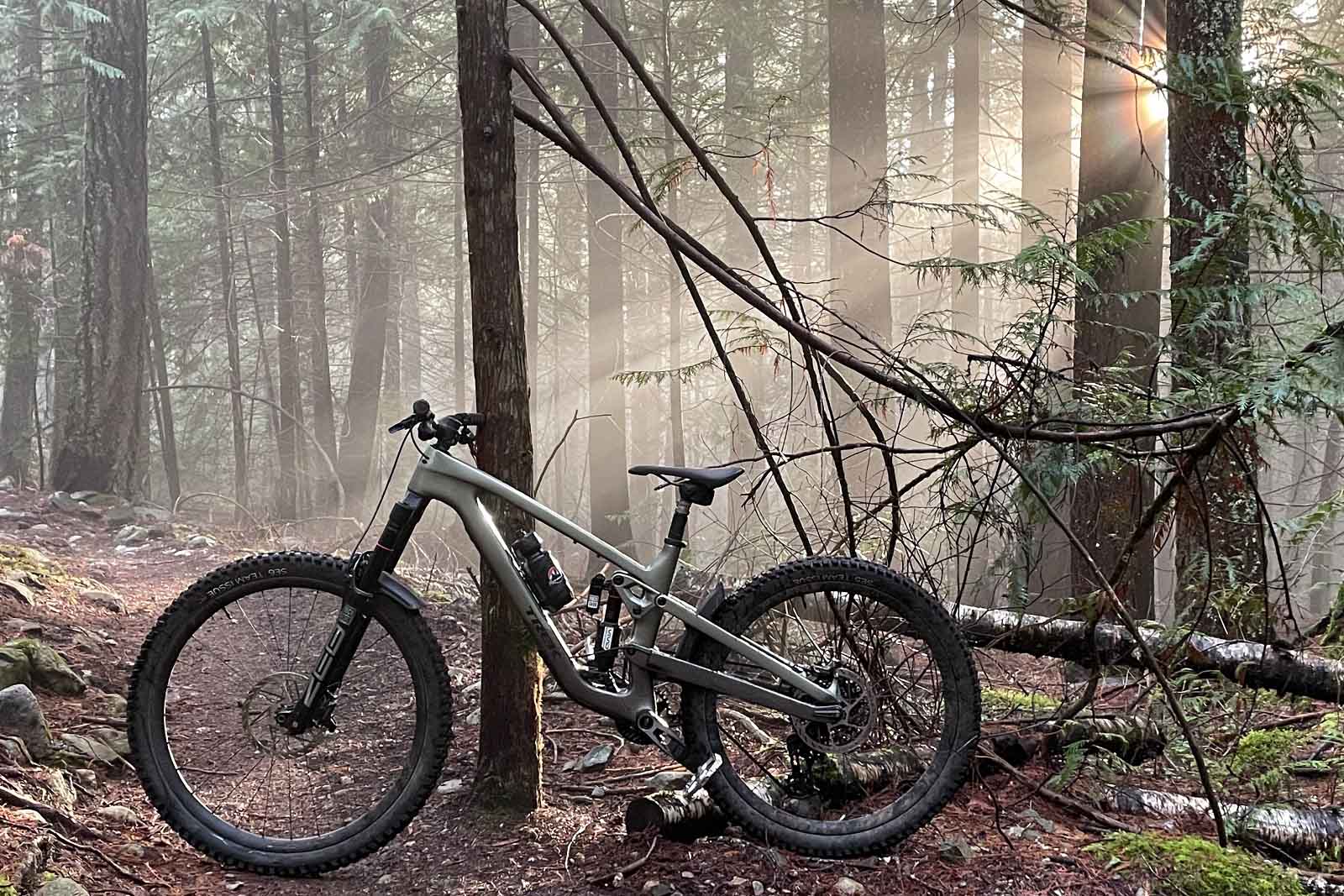I’m lucky to live in an area with delightfully steep and rough terrain. Because of that, long-travel bikes like Trek’s Slash are right up my alley. The 2024 Slash’s generation 6 frame is ready to get rowdy with a new high-pivot suspension linkage and 170mm travel. The bike simply plows through rough terrain, but remains impressively capable of getting itself back uphill for more laps.
The short story is I have nothing negative to say about Trek’s transition to the high-pivot suspension linkage. The new Slash is buttery smooth, yet offers a surprisingly poppy ride and still climbs as aggressively as their ABP bikes. The Slash is not the lightest bike, but that’s kinda fair since it’s such a beast.
2024 Trek Slash: Key Specs
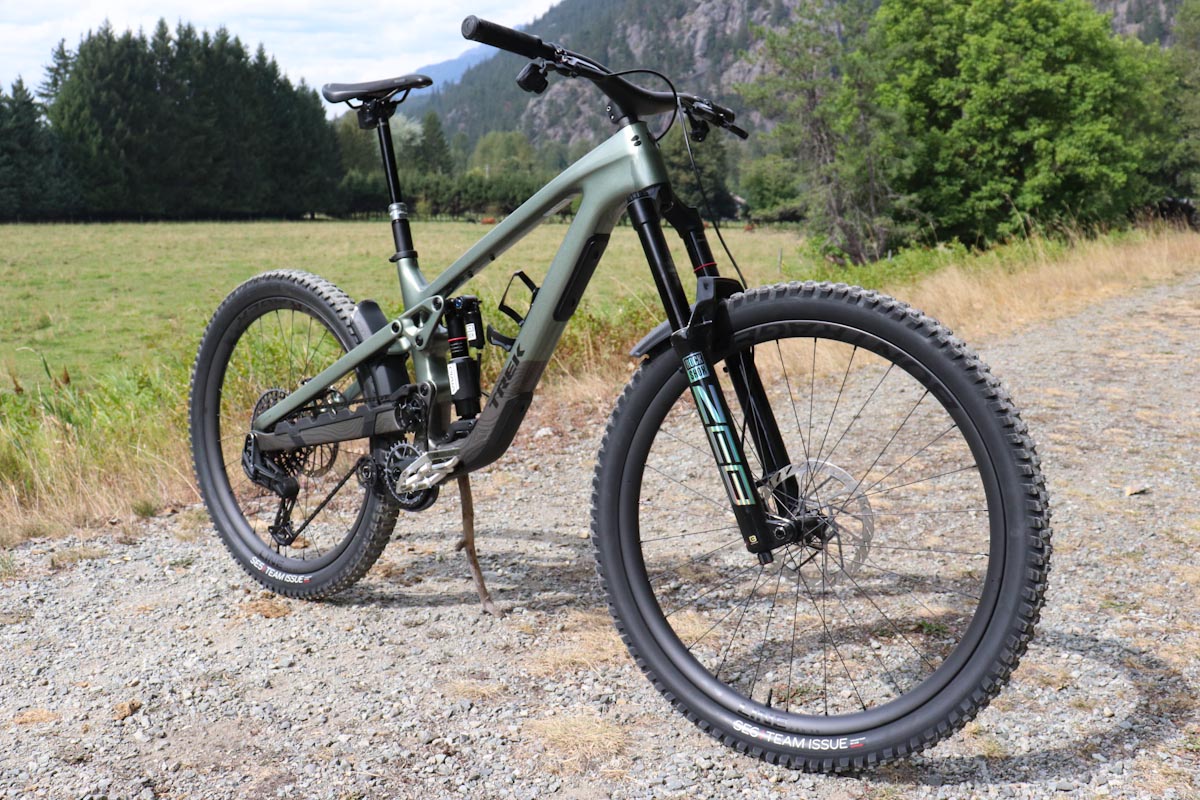
For full details on the new Slash lineup, check out my launch article from September. Before we get into the ride review, here are a few key specs and features of the 2024 Slash.
Most models of the Slash, including the 9.9 X0 AXS T-Type model I tested, come with full carbon frames. There are two aluminum complete models and an alloy frameset in the lineup. Of course, the biggest update for the Slash is the high-pivot linkage. The Slash now offers 170mm rear travel and all models come with 170mm forks.
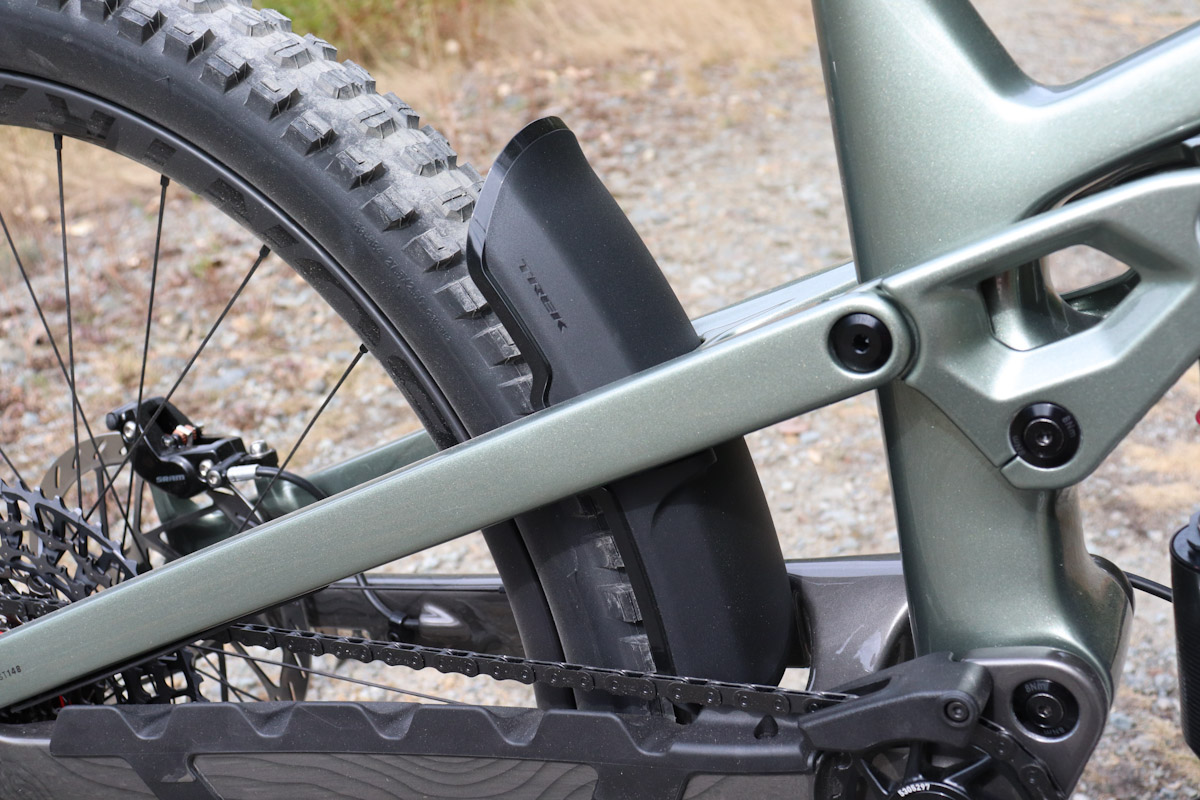
Another interesting change for the new Slash is that they all come stock with a mixed-wheel setup (except small frames, which run dual 27.5” wheels). Frame sizes medium and up can run a 29” rear wheel, but you must buy the geo-correcting shock mounts from Trek. You’ll also have to remove the rear fender, as it doesn’t leave enough clearance for the 29” rear wheel.
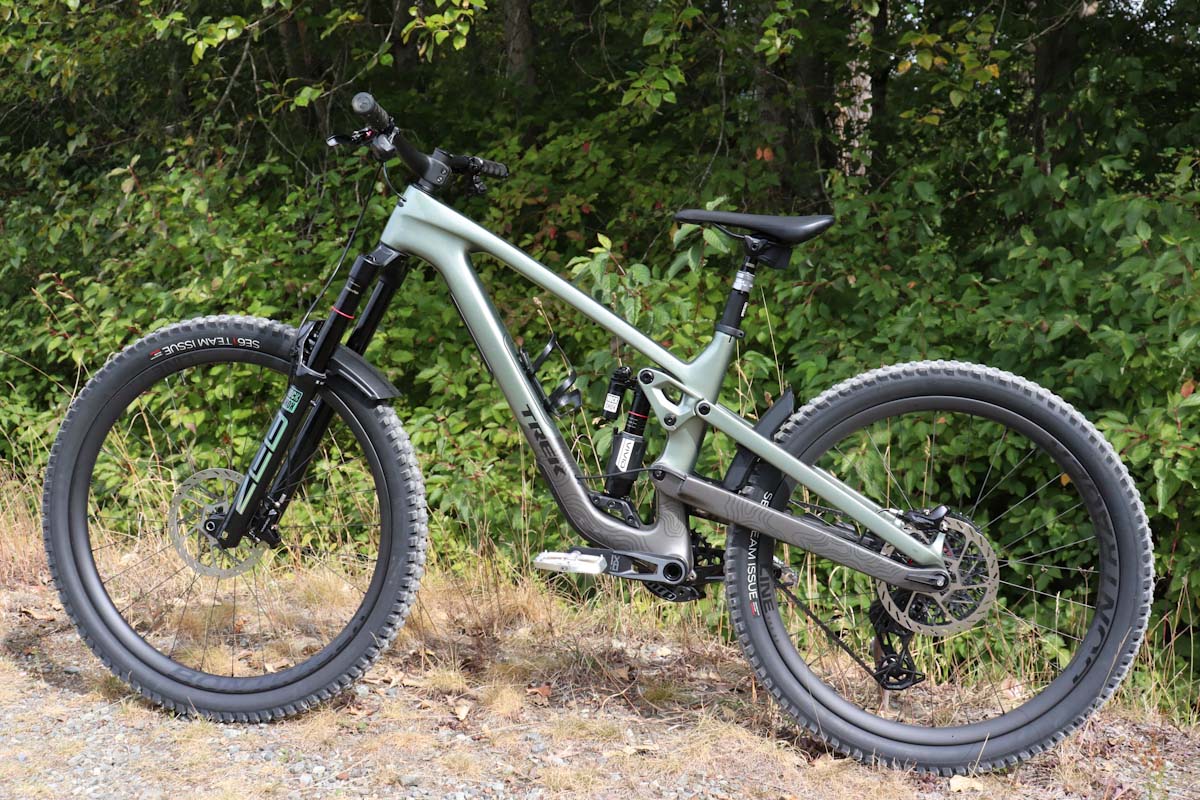
The Slash boasts very slack and adjustable head tube angles, which can be altered by adding Trek’s angle adjust headset cups. Trek also incorporated their leverage rate chip into the shock mounts, offering ‘less’ and ‘more’ progressive settings. The Slash does not have Trek’s mino link anymore, as the other adjustments offer plenty of opportunity for fine tuning. Trek also decided to do away with their Knock Block headset.
A nice finishing touch for the carbon-framed Slash is Trek’s new ‘Carbon Armor’ frame protection. Before they’re painted, Trek wraps the frames with an impact-resistant film.
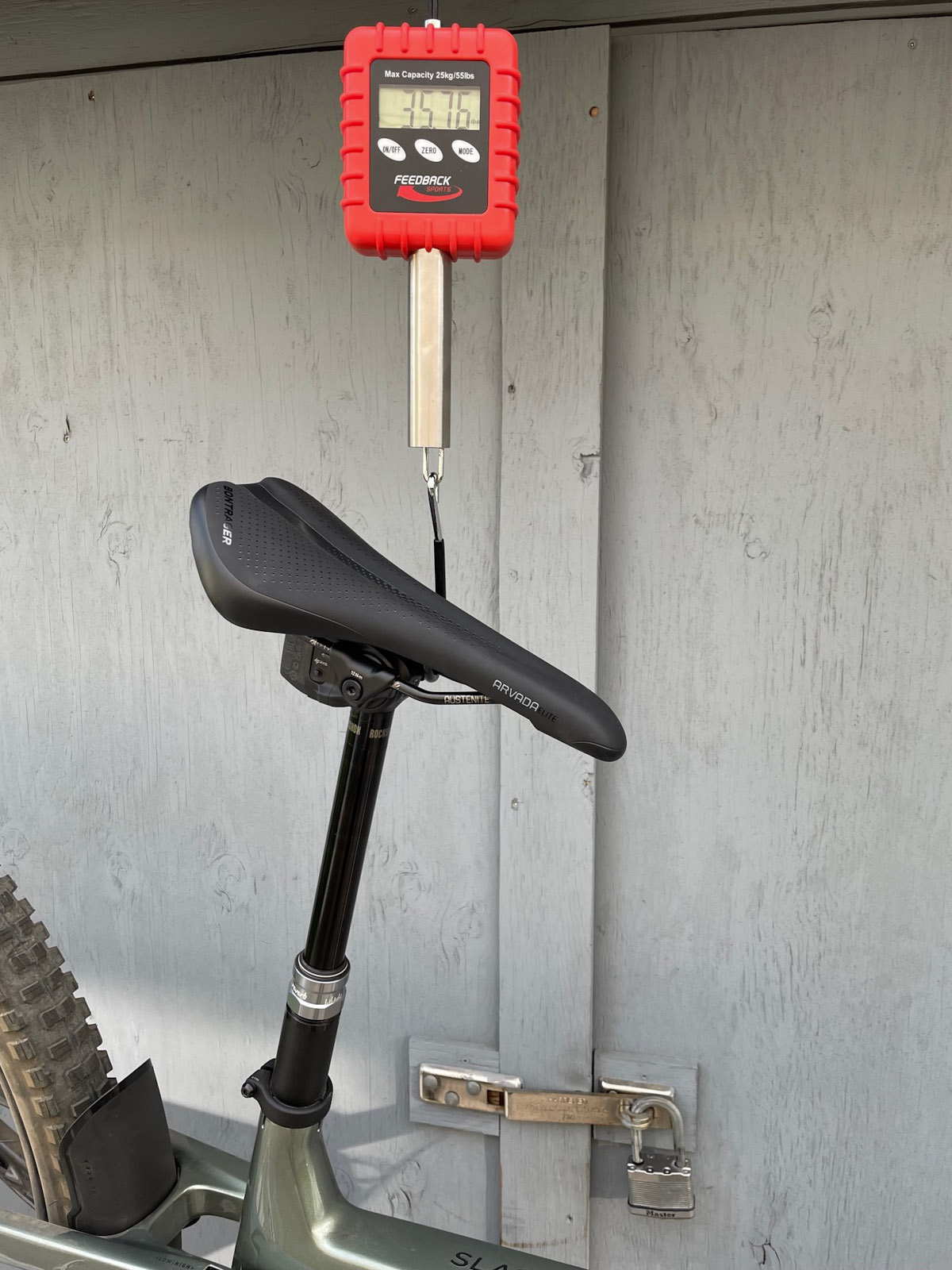
The Slash 9.9 X0 AXS T-Type (size M/L) weighs 35.76 lbs with pedals. Considering this is a beastly 170mm travel bike, and has extra hardware for its high pivot linkage, I guess I couldn’t hope for much better. I have to say though, with a full carbon frame, carbon rims and a lightweight carbon bar/stem combo, I was a bit surprised to see this high-end model come in over 35lbs.
Geometry/Fit:

At 5’10” and riding a M/L frame, I’m very happy with the Slash’s geometry. For this article, I’ll discuss the geo of my test bike, which has neutral headset cups and its stock mixed-wheel setup. Unfortunately, I didn’t have a compatible 29” rear wheel on hand to test.
So you know, the geometry remains very similar if you install a 29” rear wheel. Aside from the chainstay length growing by 6mm, there are very minor differences in certain angles and measurements. Check out Trek’s website to see all the different geo charts.
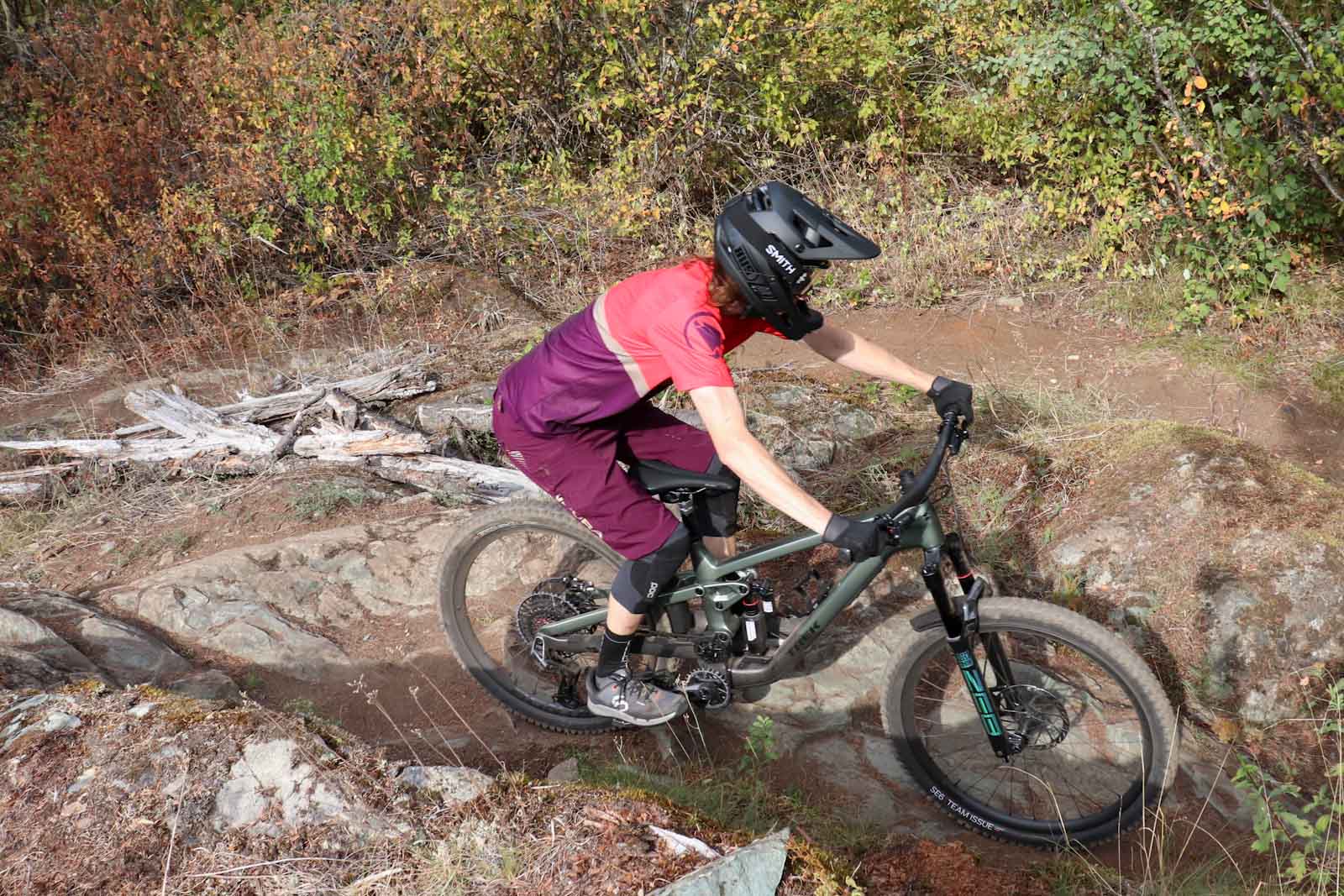
My test bike’s head tube angle is 63.3°, and I loved it. The slack steering angle tackles steep and rough terrain like a champ, but as I’ve found with slacker long-travel bikes it doesn’t hamper climbing ability by much. I’m not sure if I would go any slacker for trail riding, but if I set up a Slash for bike park shredding I’d be tempted to try the slacker headset cups. At 63.3° the Slash offers a ton of stability and feels great on steep downhills, yet the bike still doesn’t feel overly long or clumsy on tight switchbacks.
Helping get you uphill is a steep effective seat mast angle of 77.3°. With a lengthy reach of 468.1mm, that steep seat tube leans you into a well-balanced position over the bike. This is one of the longer bikes I’ve ridden, but I never felt like my arms were overextended.
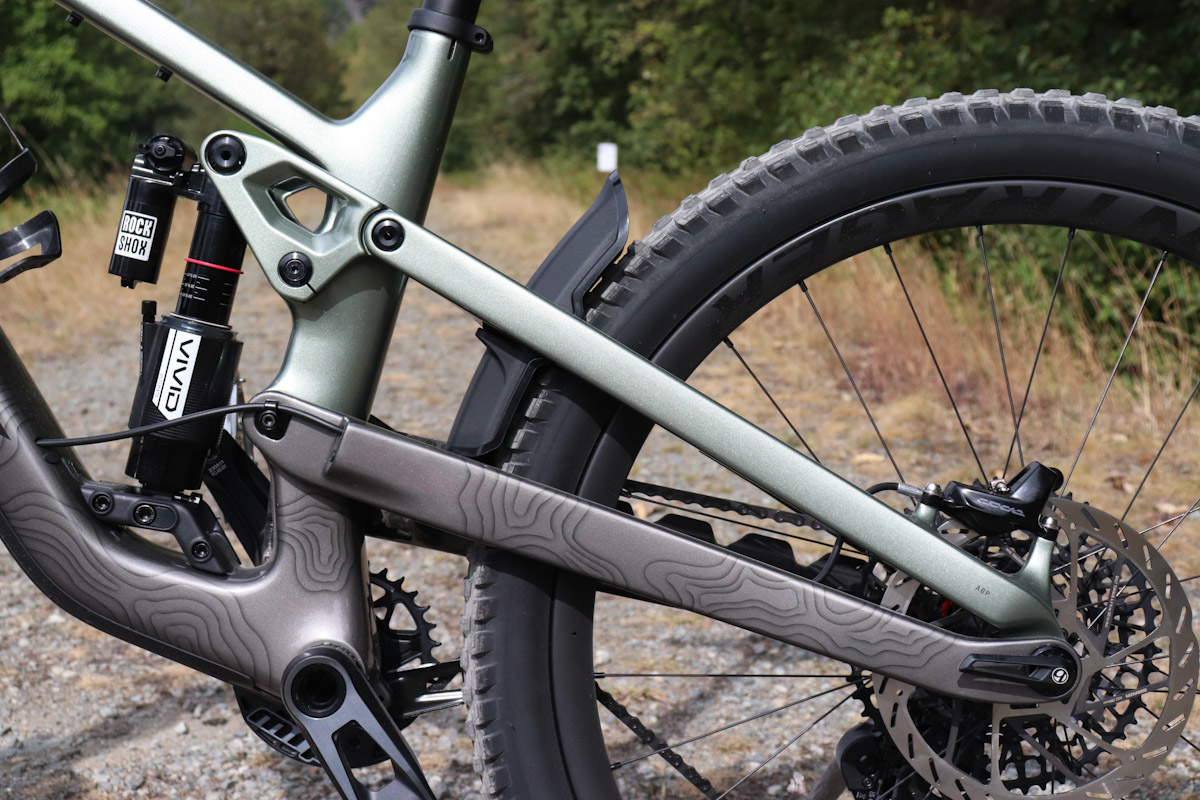
With Trek’s size-specific chainstays, the M/L mixed-wheel Slash’s rear end measures 434.2mm. This middle-of-the-road length, especially with the 27.5” rear wheel, keeps the Slash pleasantly agile. Overall the bike feels long and very stable at speed, but the rear end simply whips around corners. I should note this is the first MX bike I’ve ridden, and I quickly understood why people like them. I’ve never been amazing at cornering, but I felt like I suddenly got better when I hopped on this bike!
Looking at the numbers, the Slash isn’t the lowest bike out there. The standover height is not particularly low at 766mm, and neither is the BB height of 351mm. Up front the stack height is 632.1mm. I don’t remember banging pedals or the 165mm cranks very much, so the BB height allows decent clearance on the trail. It’s higher than some competitors, but the Slash’s long wheelbase and slack steering still provide a very stable ride.
Climbing:
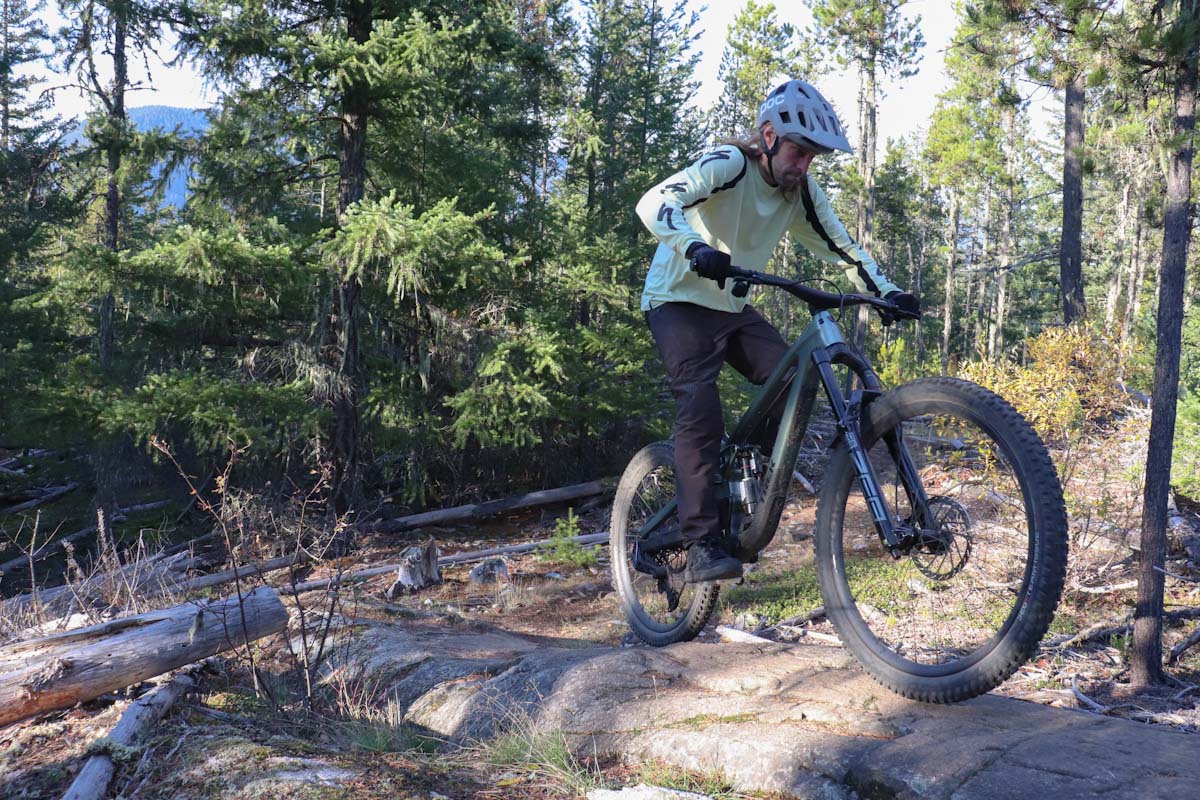
On my first ride with the Slash, I did notice the slightly sluggish roll of the 27.5” rear wheel. I had been riding niners for a few weeks before the Slash arrived, and I have to admit I felt the difference right away.
That said, I quickly forgot about the smaller rear wheel and adapted to the Slash’s ride. While I’ll never say it’s the best climber I’ve ridden, it does very well for how burly a bike it is. Shedding some weight and running 29” wheels would make it climb better, but that’s not what the Slash is all about. Trek describes this bike as ‘70% downhill, 30% uphill’ but I’d say it climbs a little better than that suggests.
I’ve always found Trek’s ABP linkage to climb aggressively and powerfully, and the new high-pivot version doesn’t behave too differently. Trek tuned the new Slash’s anti-squat to be pretty close to their Top Fuel XC/trail bike, so your pedalling inputs won’t force you deep into the Slash’s lengthy travel.
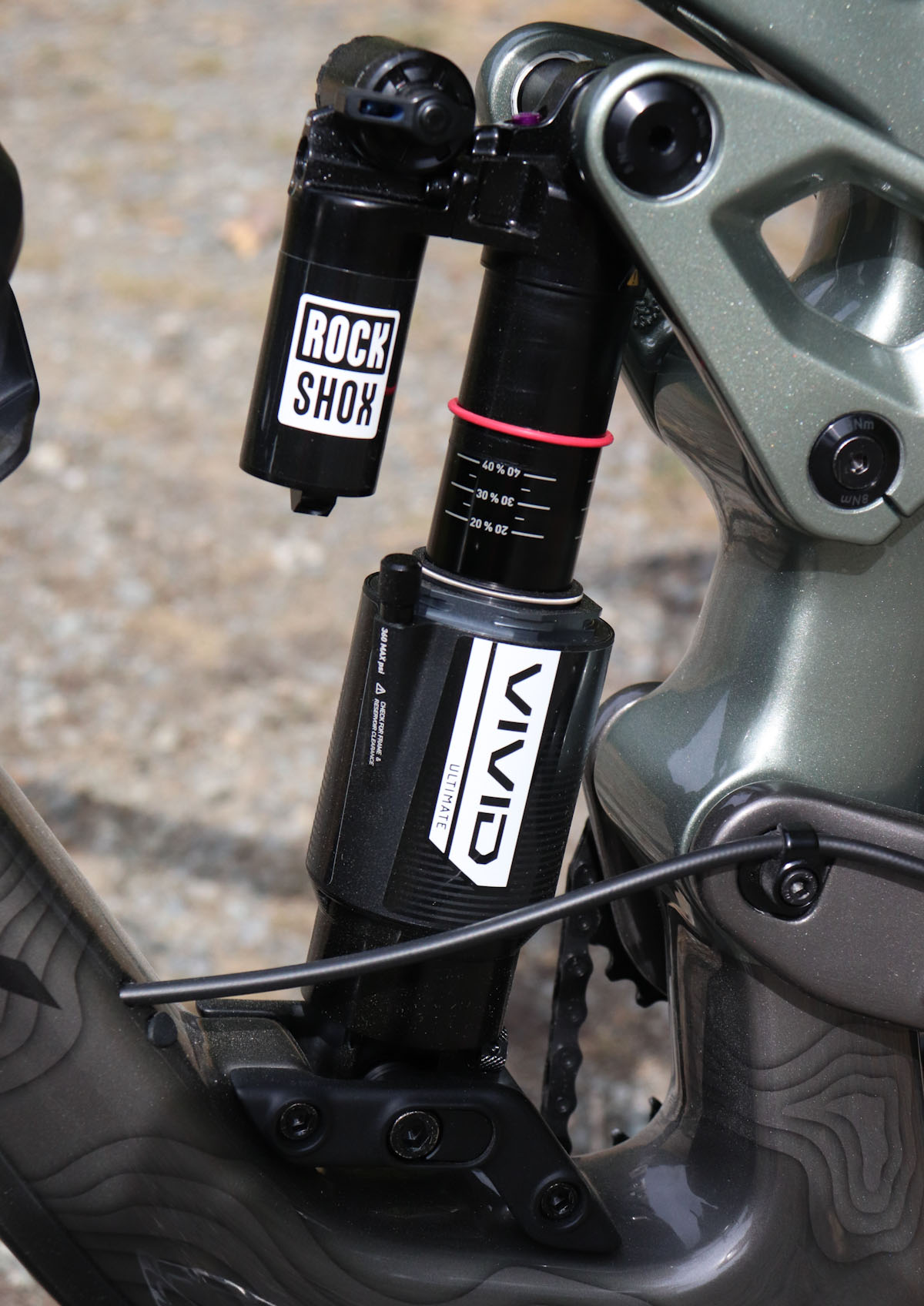
Climbing singletrack with the shock in firm, I’d get about 50% travel. In open mode, the shock would dip a bit further but top out around 60-65%. I’ll take the slightly rougher ride and increased pedal support from the shock’s firm mode, because in either setting I had solid traction on any singletrack climb. In firm mode the Slash doesn’t erase small bumps; you still feel the trail below you with the shock resisting those low-speed impacts.
In open mode, the shock helps soften those small bumps and offers a more comfortable ride. Fortunately, there is little sacrifice in pedalling efficiency when the shock is left open, so riders looking for maximum traction can opt to climb this long-travel machine wide open with practically no penalty.
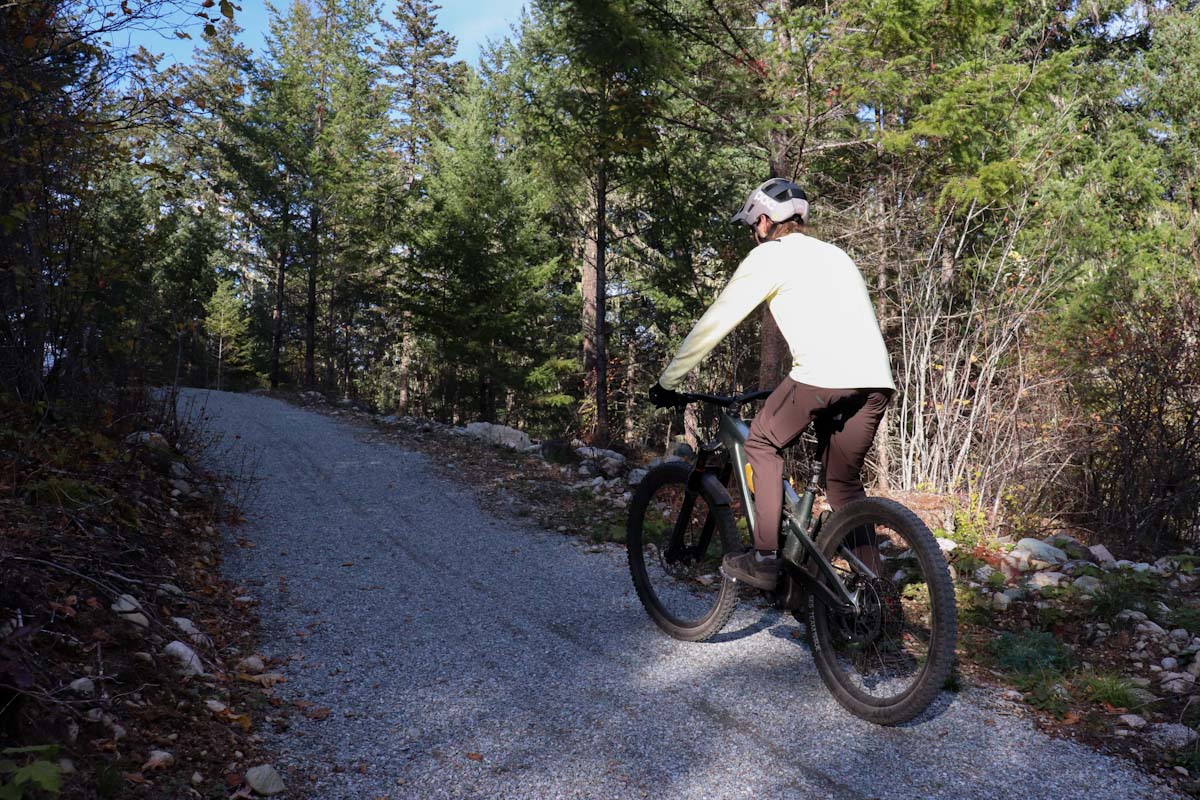
With the rear shock left wide open, I tried some hard pedaling and sprinting on paved roads to see what the Slash’s high-pivot linkage would do. Sitting down and mashing the pedals as best I could, I could not get the bike beyond 40% travel (from 30% sag). Even standing up and sprinting, I only made it a bit further than 40%. It’s clear that Trek’s linkage handles pedaling forces very well. The bike was in its ‘more’ progressive position for this test, but I don’t think it would behave much differently in the ‘less’ setting so early in the travel.
It’s always nice when a bike has no unusual setup requirements. With the Slash, I pumped the shock up to body weight in psi, set rebound/compression to my usual ranges, and the bike was dialed. Right away I was getting full travel from the rear shock (with the leverage chip in ‘less’ position), which is sometimes an issue for my 145lbs self.
Descending:
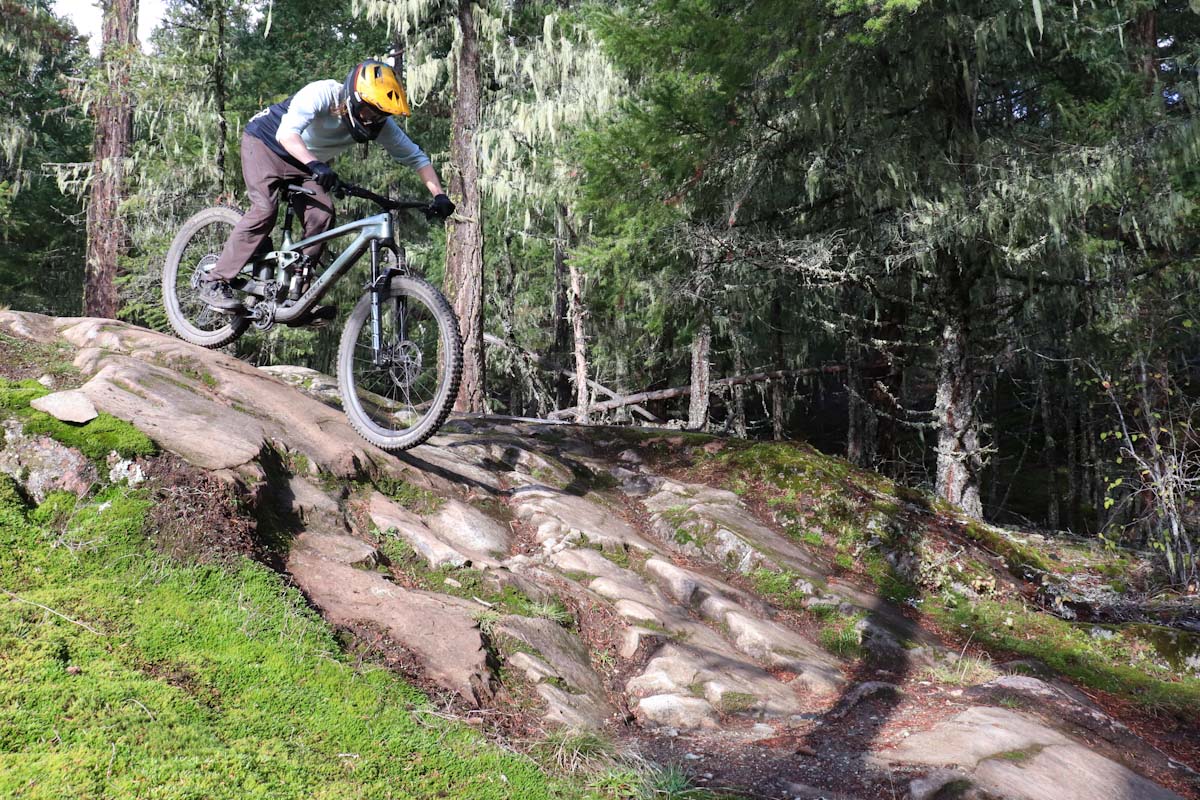
I’ve always found Trek’s MTBs to be great at gobbling up bumps, but the high-pivot Slash is even better. I noticed it does particularly well at eating up mid-sized bumps, happily plowing through roots and rocks. The rearward axle path does a great job of numbing bigger hits and keeping the Slash feeling planted on rough trails. I found the bike cushions landings very well, especially on little jumps that send you right onto a rocky or rooty patch.
It’s hard to pinpoint a weak spot in the Slash’s suspension. At higher speeds, the bike smooths out small bump chatter very well, and as noted above it rounds off medium and big hits nicely.
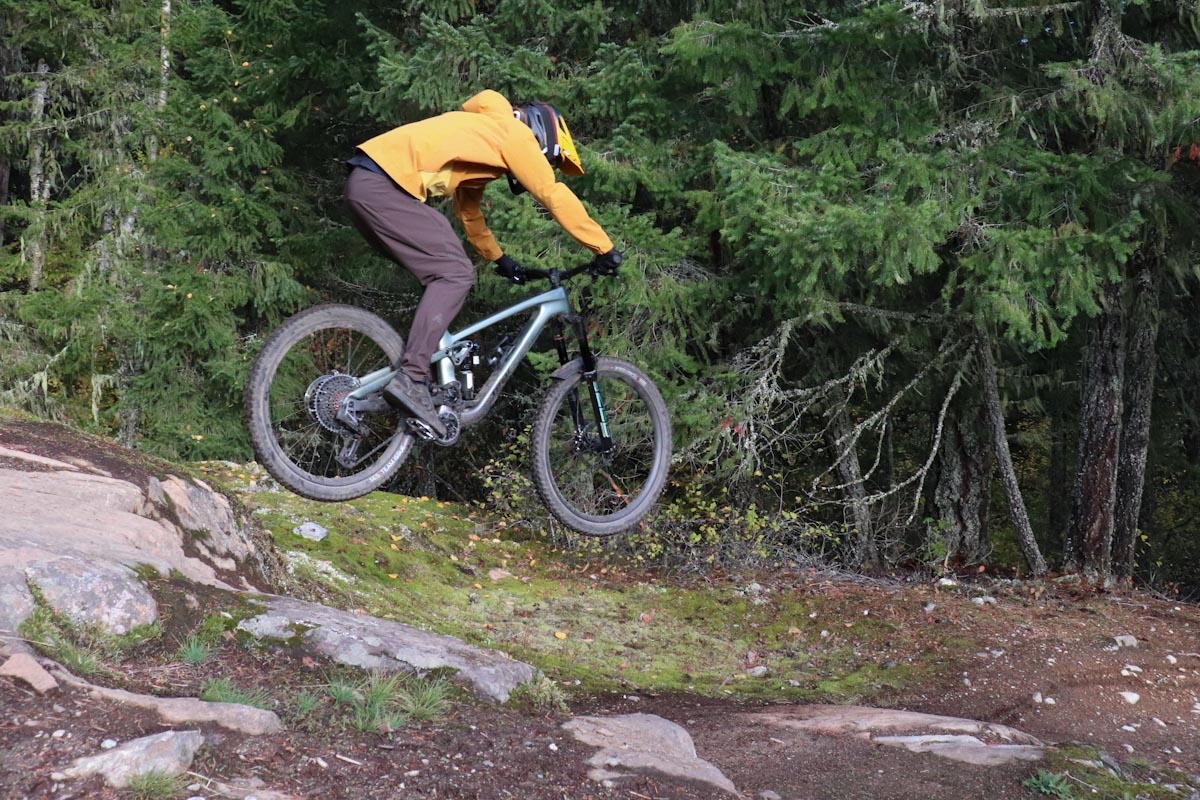
Furthermore, with all that squish when you want it, the Slash actually seems to pop off jumps a bit better than the 2019 Remedy I owned for several years. It also springs out of corners surprisingly well, as I’ve traditionally found Treks to be a better example of plowy than lively and poppy. It seems the big Slash has maintained an impressive degree of mid-stroke support.
Just looking at this frame, you’d probably expect it to be stiff and you’d be correct. Just like the previous generation Slash and Fuel EX I rode, I found the 2024 Slash’s frame offers a solid, commanding feel as you charge down rough trails.
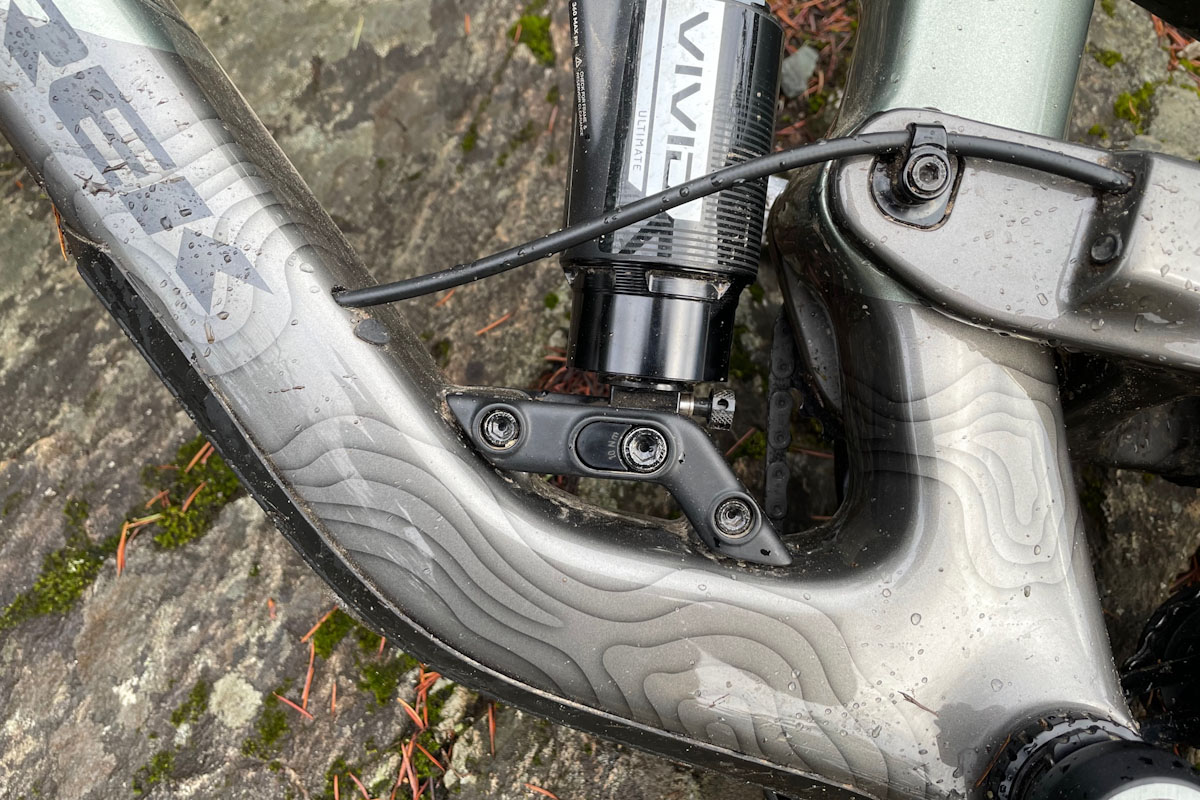
For most of my rides, I had the leverage chip in its ‘less’ setting, but I flipped it to ‘more’ for my last few test laps. Interestingly, the ‘more’ setting doesn’t seem to increase bottom-out resistance by much; I hit full travel on a typical trail loop in the first ride in this setting.
What I found is the rear wheel does feel like it’s resisting bigger, sharper hits more. Under my lightweight self, the Slash felt a bit less plowy and the back wheel would bounce a bit more facing sharp impacts. The only time I got a good ‘thunk’ out of this bike’s rear end was while riding in the ‘more’ position. For me, there’s no question I’d keep the Slash in its ‘less’ setting. The biggest joy of this bike is how capably it sucks up rough terrain, and I’ll take all the squish it has to offer.
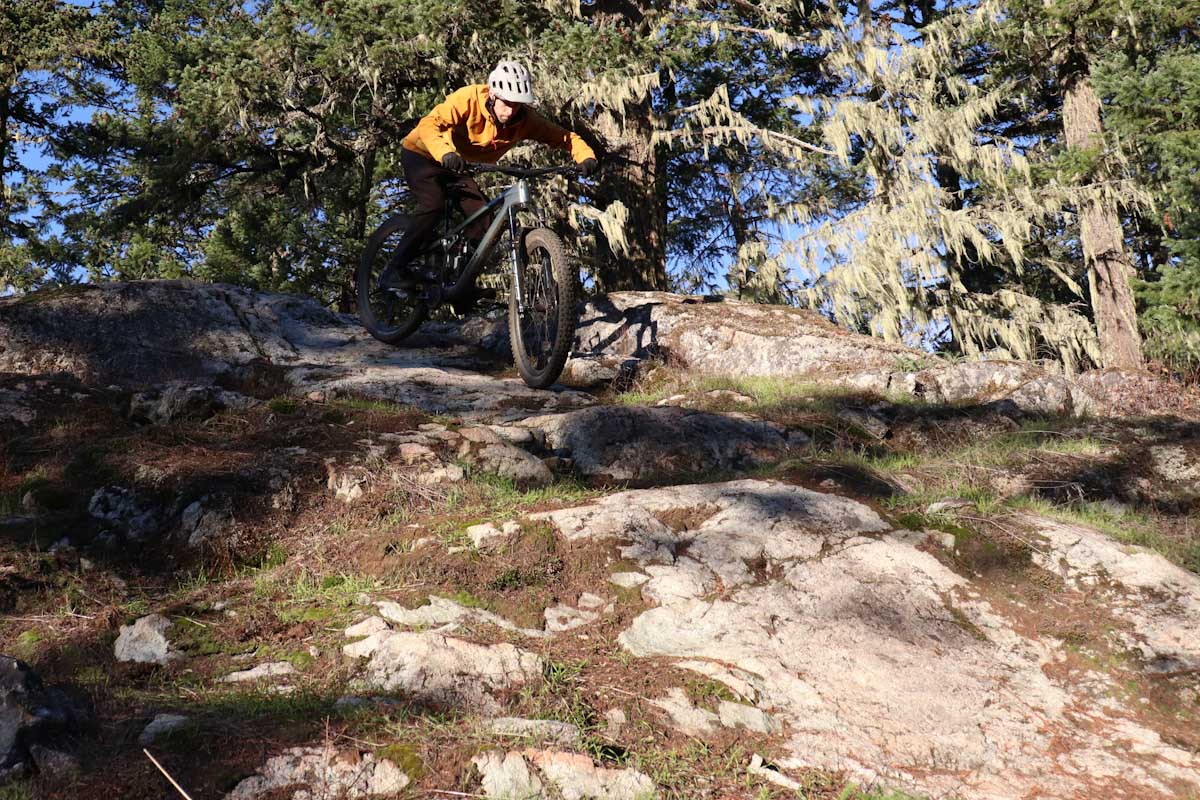
The Slash’s 27.5” rear wheel offers good clearance. I rode the steepest trail in my local network and didn’t hit my ass on the tire once (and I have on my personal 29er)! As mentioned above, the mullet setup also has an immediately noticeable benefit in the corners. After you initiate a turn, you then feel the back end hook in and bring you around quicker than a 29er would.
Chain Drop?
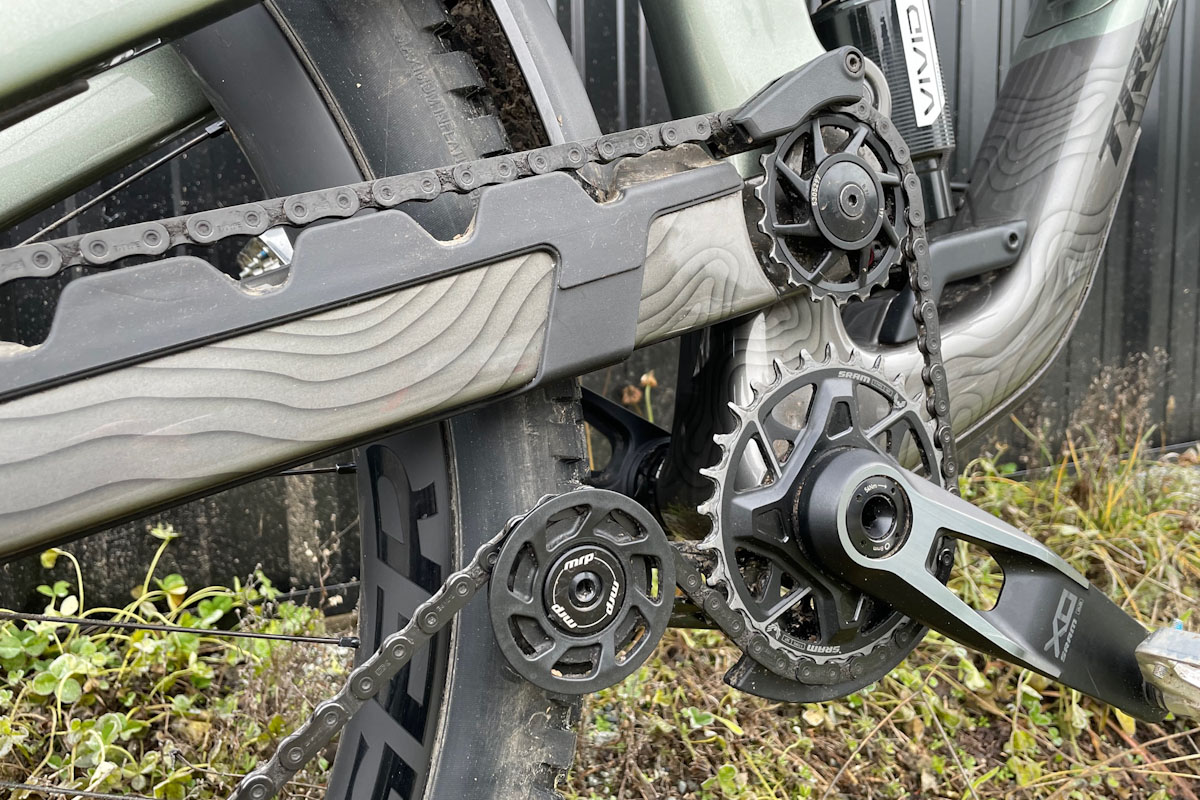
Some of you may have seen reports of the new Slash dropping chains. Apparently, some of the bikes were sent out with the lower chain guides incorrectly installed, and some riders had issues with chain drop. After many rides on my test bike, I got the notice from Trek and found out it was indeed not to spec… however I never dropped a chain.
By the time I got the info on how to correct the situation, winter had set in and my testing was pretty much done. I rode the bike two or three more times without even adjusting the chain guide, and still never once lost my chain.
To fix this issue Trek is making sure all Slashes will now be shipped out with the correct setup. They’ve also notified dealers on how to fix the issue, and as an extra precaution, they’re supplying upper idler pulleys with longer teeth to dealers at no charge. As of early 2024, anyone with a new Slash can go to their local shop and have the revised idler installed.
If you’re wondering about potentially increased drag with the high-pivot chain line, I can’t say I noticed anything measurable. Of course, this is a brand new bike; over time the upper pulley might produce extra drag if the bearing wears out, but with all new components the Slash pedalled like any other MTB.
Components:
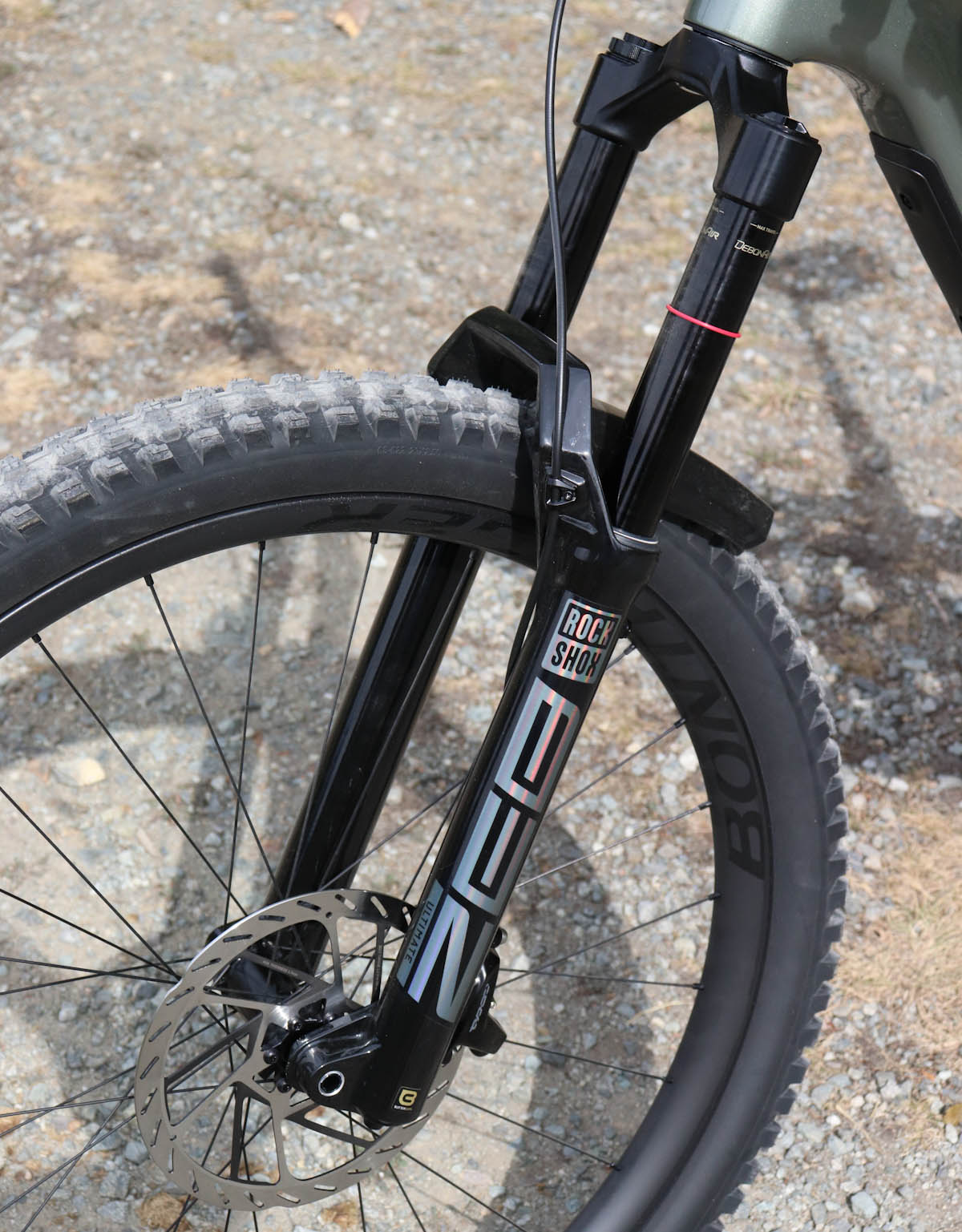
A RockShox Zeb fork was the obvious choice for the burly new Slash. The 9.9 X0 AXS T-Type bike I rode gets the Ultimate model with a DebonAir spring and Charger 3 RC2 damper. The fork is stiff, offers great initial sensitivity, and sucks up bigger hits in class-leading fashion.
Out back, RockShox’s Vivid Ultimate rear shock performed great with very little fidgeting. The stock tune feels pretty linear which works well for a smaller guy like me, allowing full squish on nearly any descent. The shock’s firm mode resists low-speed impacts nicely, but doesn’t ride like you’re at near-lockout firmness.
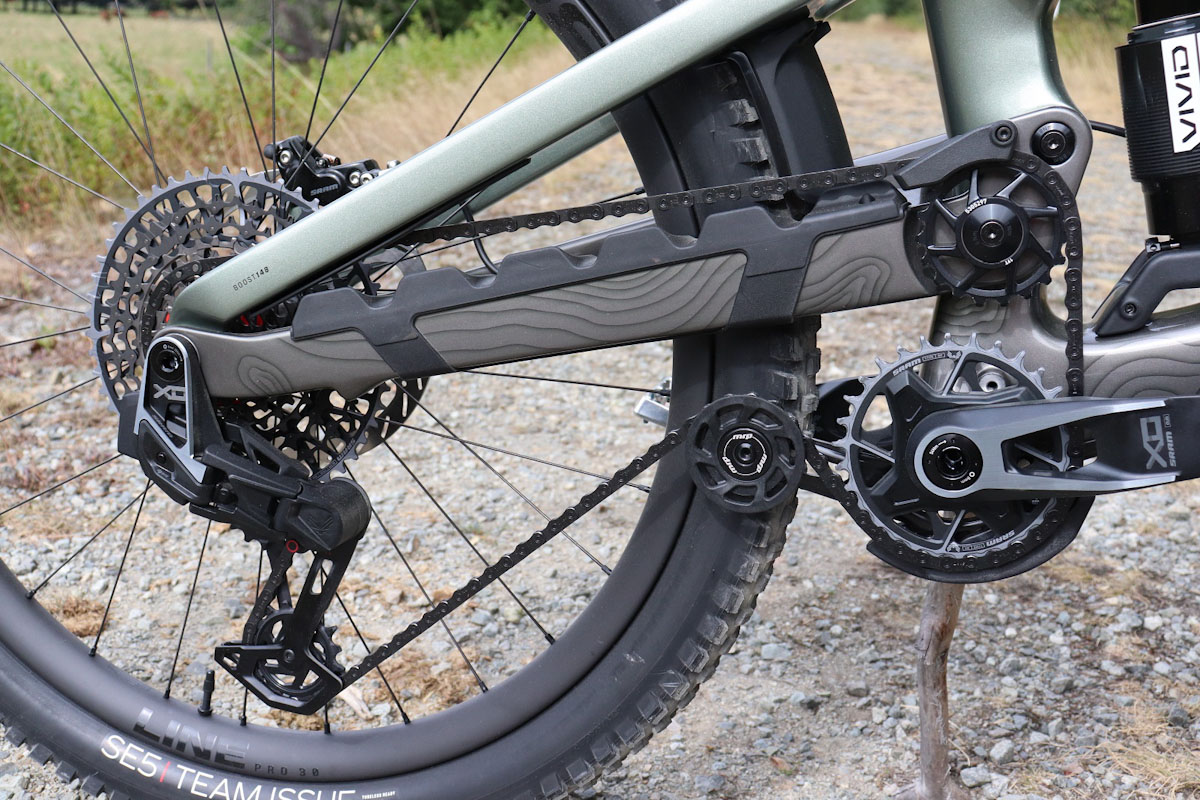
Overall I had great performance from the SRAM X0 Eagle AXS T-Type drivetrain and dropper post. However, the dropper post suddenly stopped working in the middle of my third ride. Once I got home I simply paired up the post and control pod, and since then everything has worked perfectly.
The 30t chainring and 10-52t cassette provide a vast gear range for trail riding, and shifting performance was basically flawless throughout my test. I unfortunately gave the T-Type X0 derailleur’s cage a good smash and a nasty bend, but didn’t notice right away because gear shifting was still fine! The derailleur will skip lightly when backpedaling but it still doesn’t derail at all, which is impressive.
Bontrager’s Line Pro 30 carbon wheels held up great through my test, showing no signs of damage or warpage. The Slash’s wheels come tubeless with a Bontrager SE6 Team Issue 29×2.5” front tire and a Team Issue SE5 27.5×2.5” rear tire. These tires offer a well-rounded tread that rolls fairly fast and provides good grip on all surfaces.
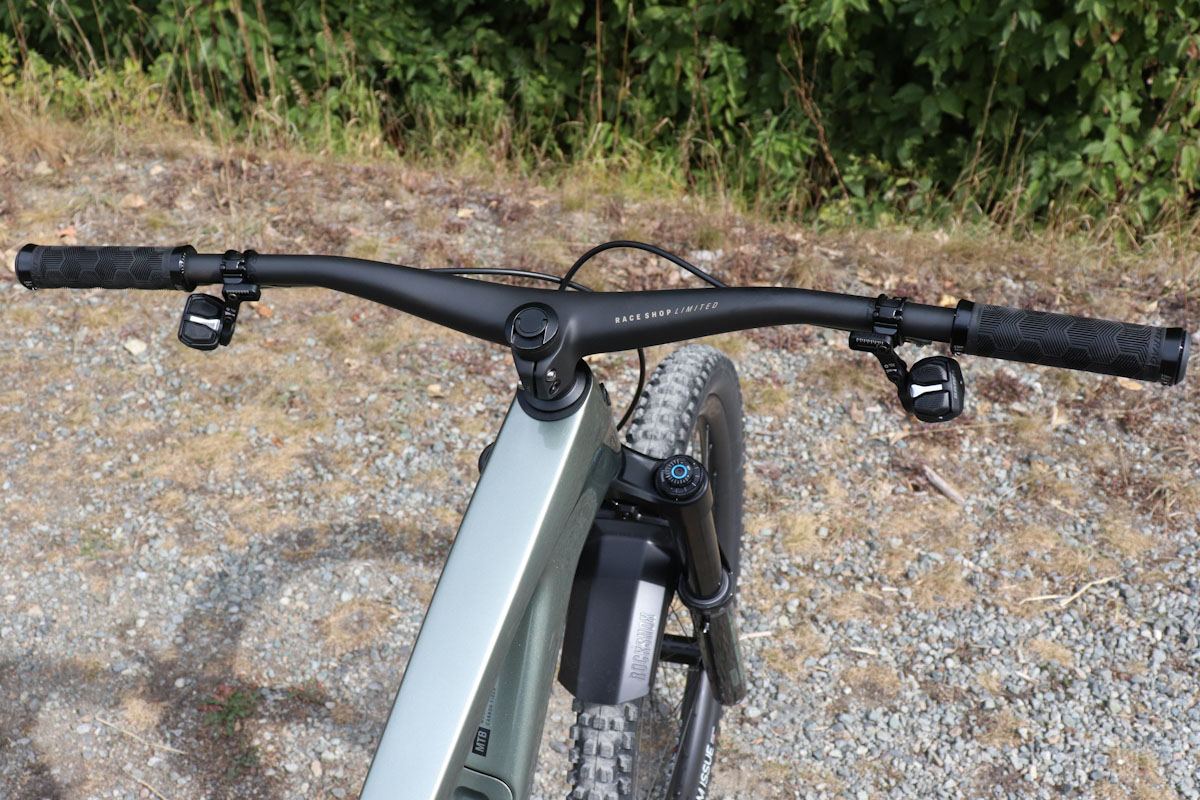
Bontrager’s RSL carbon bar/stem combo is hard not to enjoy looking at! The rise is 27.5mm, stem length is 35mm, and the bars come stock at 820mm wide. The 7° backsweep and 6° upsweep is a bit more up and less back than most bars I’ve ridden, but I found them comfortable. I would have liked to ride the full width, but my bars had been cut to 795mm. I rode these bars uncut on the previous generation Slash and was surprised how much I liked them.
SRAM’s Code Silver 4-piston brakes with 200mm rotors had no shortage of power, reeling in this big bike with great modulation and more than ample bite force.
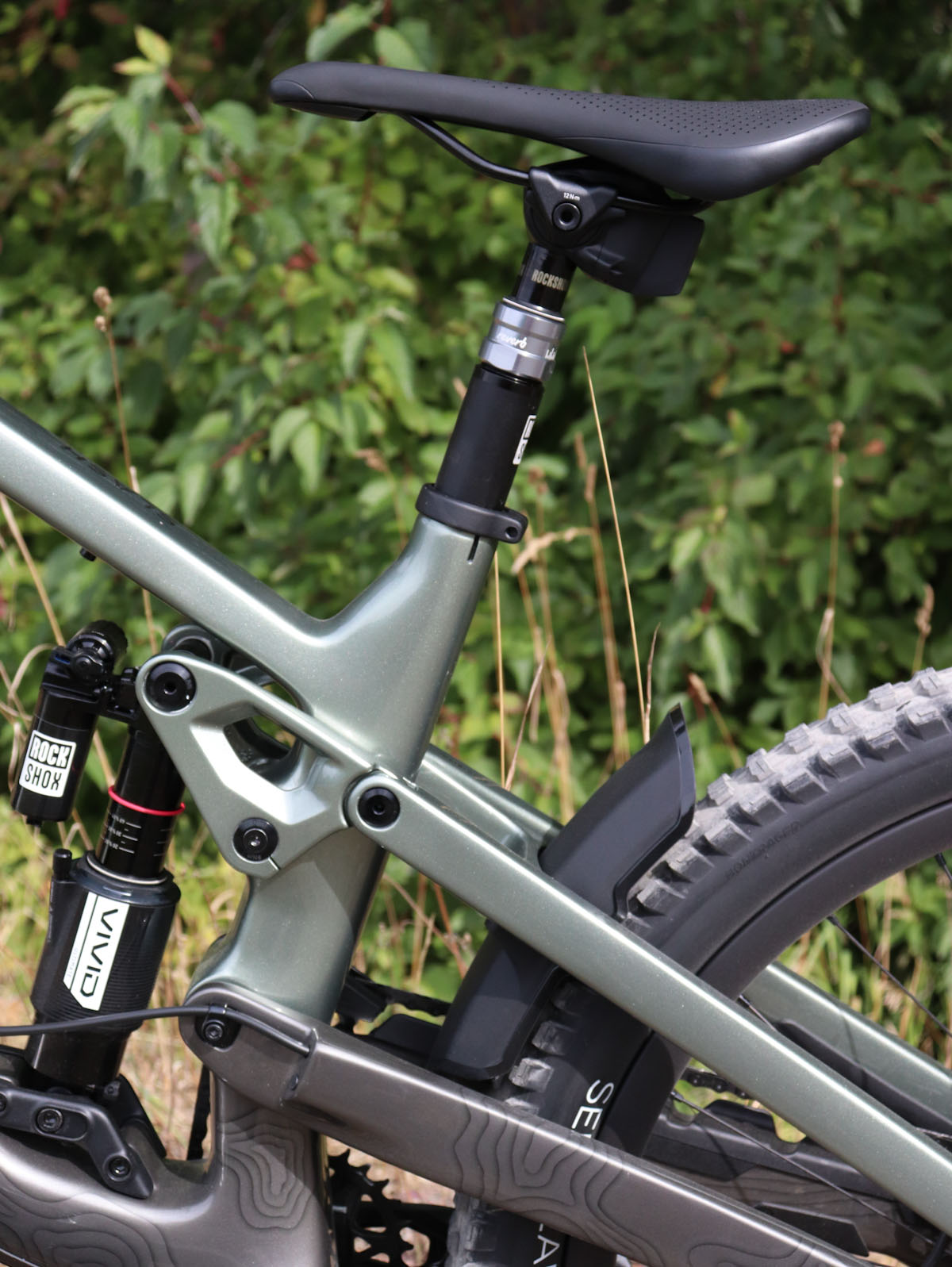
The 170mm dropper post on the M/L frame gets low and out of the way. I didn’t have any problems riding with the Bontrager Arvada saddle, but I find it a bit hard and not the most comfortable.
The Slash’s rear fender seems to work fairly well. After a wet, snowy ride I still had mud spray all the way up the back of my jacket, but less than what I expected. I also noticed the back of the dropper post and under the saddle weren’t that dirty.
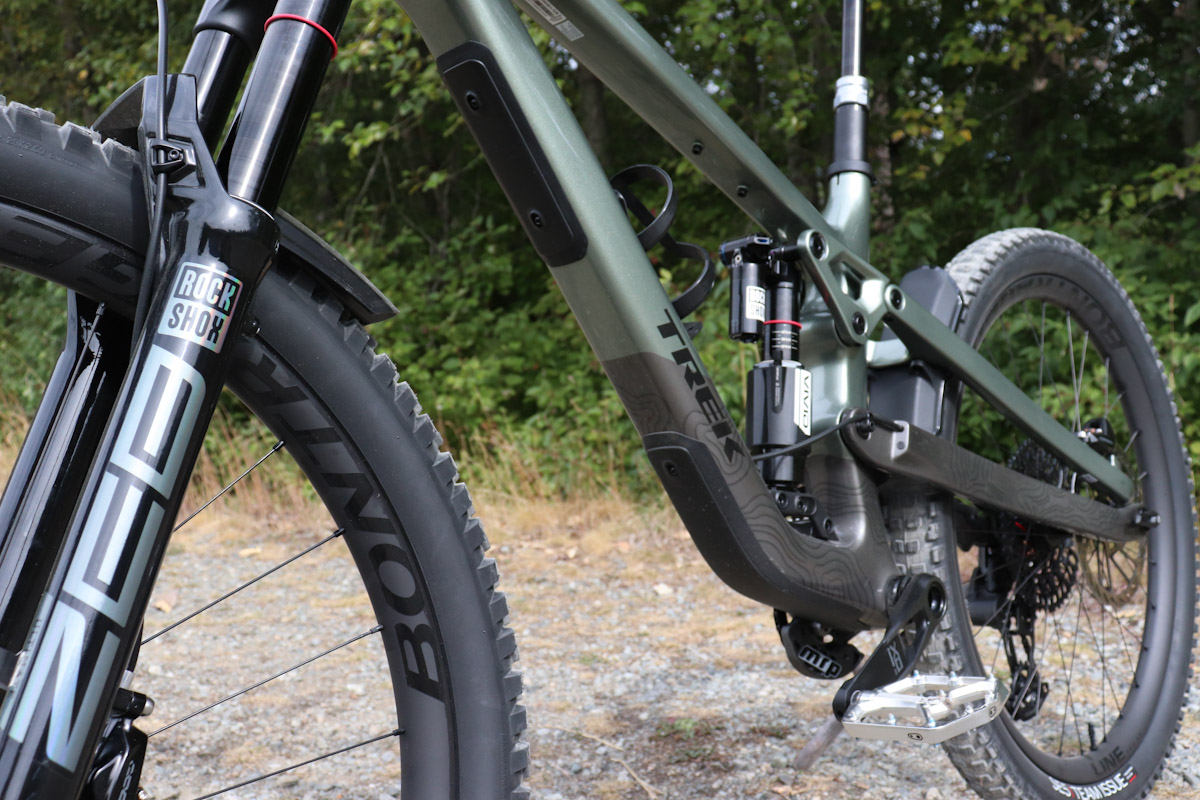
Trek’s Carbon Armor seems to help resist frame damage well. After close inspection, I could only find a few very minor knicks or scratches on the Slash. The down tube, BB shell and all the areas prone to rock strikes from the rear wheel remain basically unscathed.
Frame Storage:
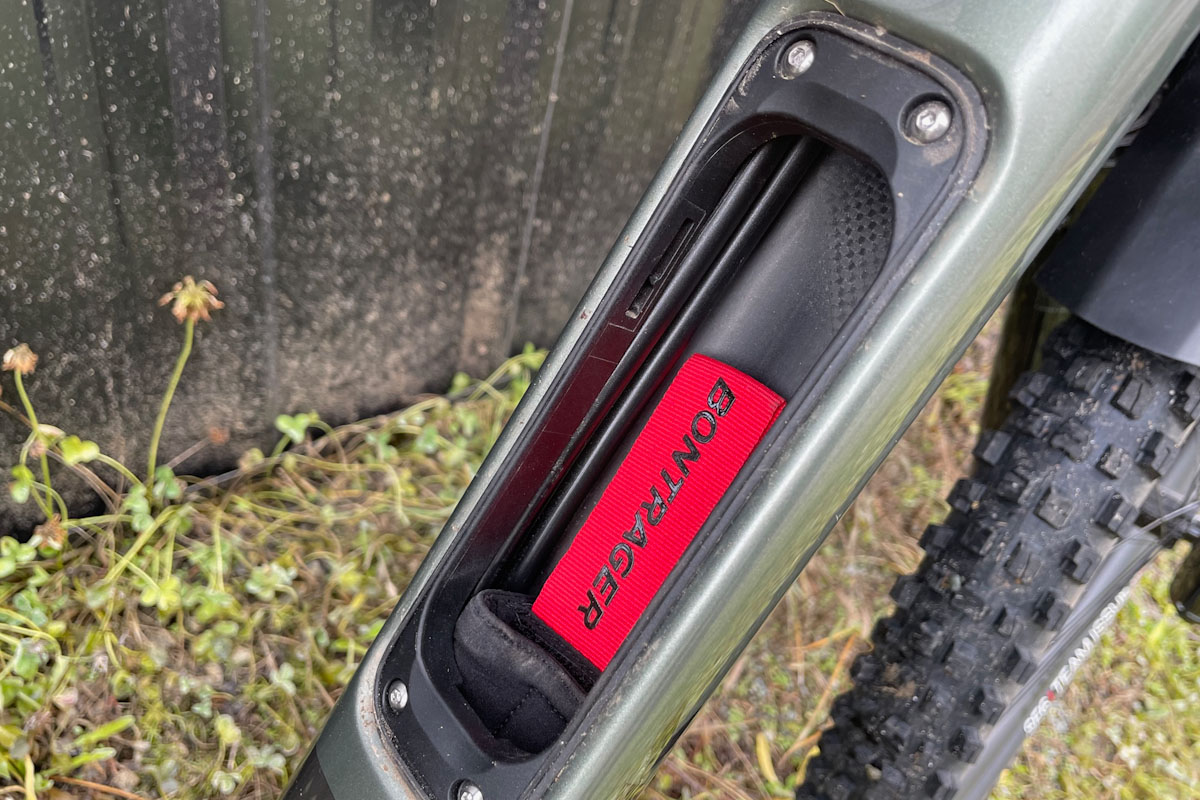
Trek’s in-frame storage was revised for the Slash, offering a larger door and an updated latch. The storage compartment is easy to open and close, and the included Bontrager BITS tool roll has spots for a CO2 canister, an inflator head, a multi-tool, and a tube (although it’ll have to be a thin one). Trek added ‘chunnels’ inside the Slash’s frame to keep your tool roll/cargo from snagging on your cables. They seemed to work well, I had no issues with anything snagging inside the frame.
Bontrager’s BITS steerer tube multi-tool is also included on all Slash 9.9 models – a nice finishing touch for these top-tier builds!
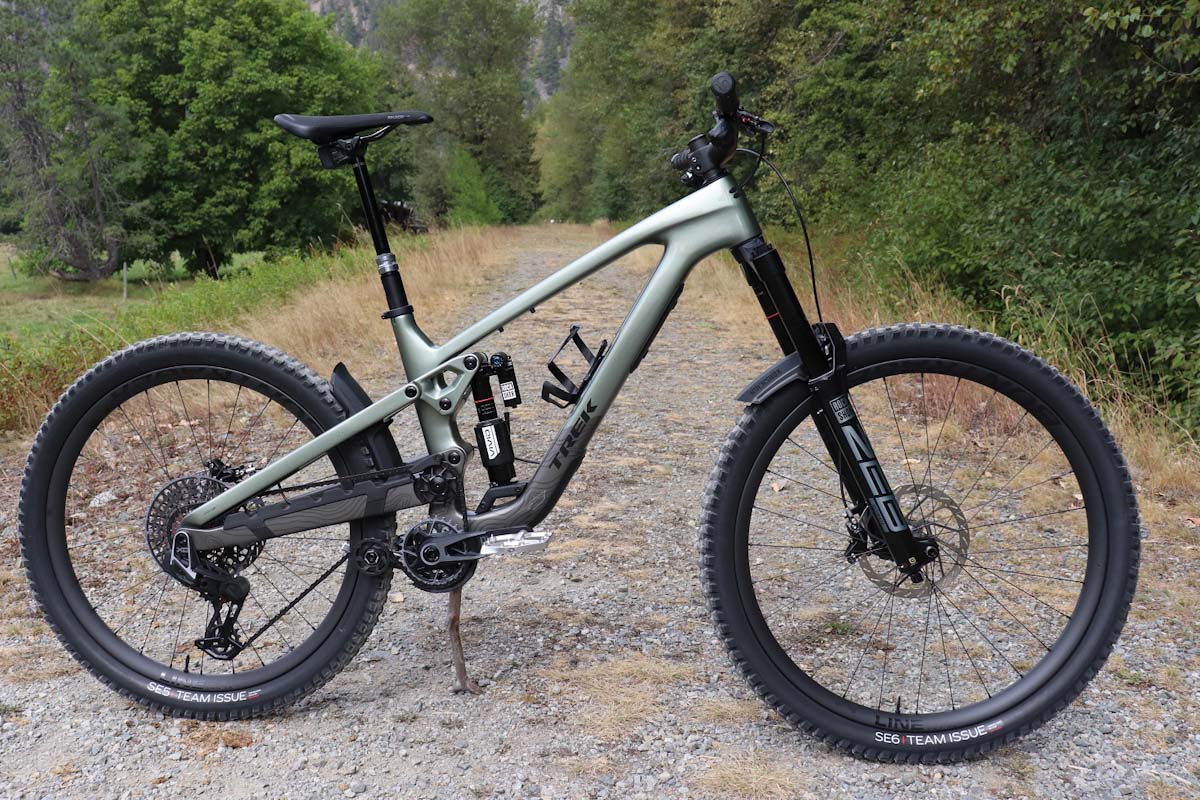
The 2024 Trek Slash 9.9 X0 AXS T-Type retails for $9399. Frame color options are Daintree, Lichen Green (as tested), or Argent Drizzle.
